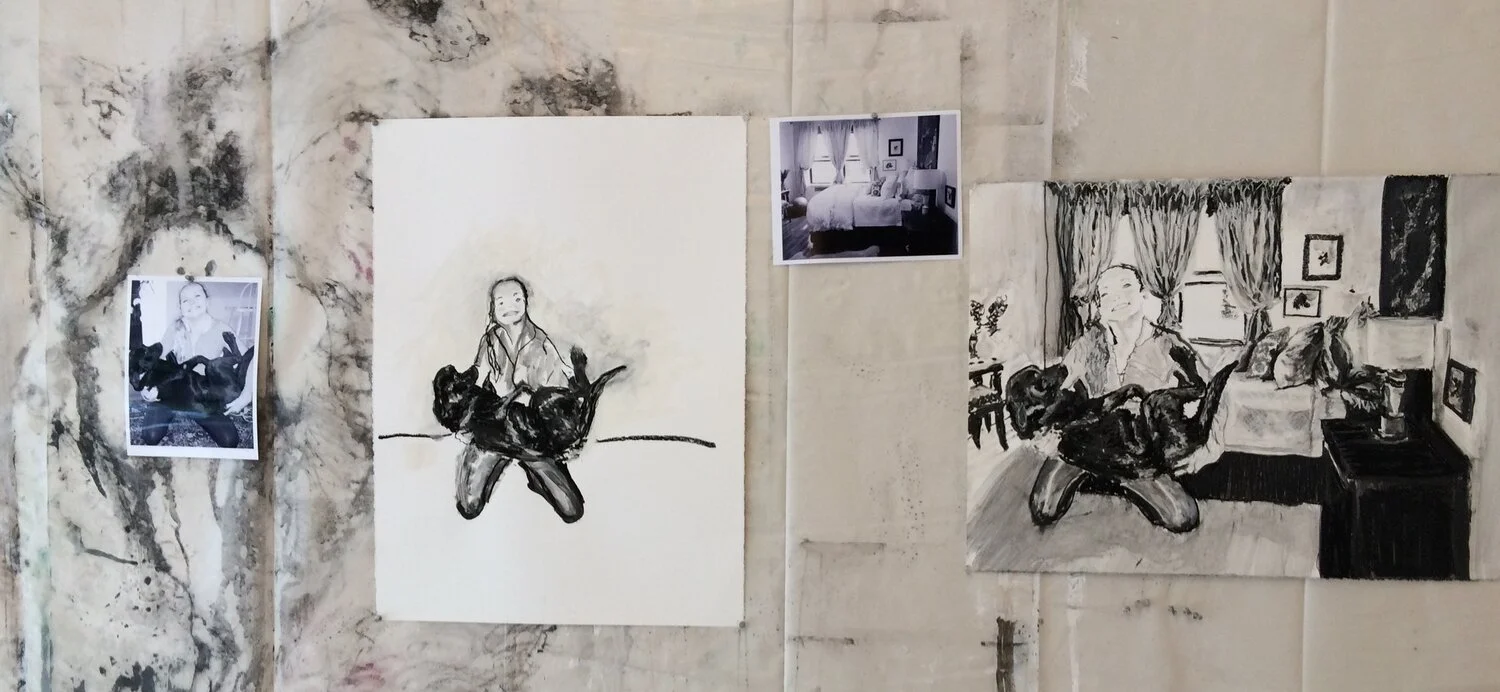Today I find myself deeply reflecting on the intricate relationship between humans and the natural world, especially as it unfolds in the small but vibrant patches of my living Sculpture Sequel. The idea of "listening to the land" resonates strongly with me, even if it initially sounds a bit abstract or sentimental. Spending time observing and contemplating how civilization can live in harmony with nature has taught me that the Earth, whether you call it landscape, Mother nature, or something else, is constantly communicating in subtle, layered ways. One form of communication it uses is relayed through plants.
A perfect example of this dialogue is the Partridge pea, a slinder but sturdy, unassuming plant that has volunteered in masses in the dappled shade of my living sculpture Sequel. This plant doesn’t just survive; it volunteers enthusiastically in disturbed spaces—roadsides, open fields, and now Sequel—acting as a pioneer species that signifies restoration and new beginnings. As a legume, the Partridge pea is remarkable in its ability to fix atmospheric nitrogen, quietly enriching the soil and supporting the growth of other plants nearby. Its roots hold the earth together, reducing erosion, while its bright yellow flowers serve as a beacon to pollinators like bees and butterflies, helping sustain the biodiversity that I strive to nurture here.
What I find most fascinating is the plant’s extrafloral nectaries, tiny glands on its leaf petioles that secrete nectar, attracting ants and predatory insects. These guardians of the partridge pea defend it from herbivores in a mutualistic dance, illustrating nature’s complex survival strategies. This sophisticated defense mechanism speaks volumes about the interconnectedness of life and reminds me why my living sculpture work goes beyond simple aesthetics or landscape design.
While I haven’t fully articulated all the regenerative and eco-friendly practices I employ yet, this relationship with pioneer species like Partridge pea is part of a larger ethos. It’s about allowing nature to guide, to heal, and to thrive alongside human creativity. My ecological recovery work in urban landscapes is a living experiment in regeneration and respect. Each plant selected or welcomed seeks to contribute to soil health, habitat stabilization, and supporting local wildlife, integrating seamlessly into the ecosystem rather than imposing upon it.
The inspiration to create living sculptures sprung from a desire to find a balance where humanity and the natural world can coexist, where art and ecology meet—where creative expression becomes a form of environmental stewardship.
Watching the Sequel evolve over time has been enlightening. I have witnessed how initially sparse or disturbed areas are beginning spring forth life—the soil stabilizes, pollinators return, and some day small mammals and amphibians will find shelter. It is a quiet transformation that feels both hopeful, necessary and a little desperate.
Integrating art into ecological restoration has not been without its challenges. Balancing the needs of living, growing plants with the permanence and intent of conceptual art and art objects forces me to think fluidly and adaptively. I overcome these difficulties by embracing impermanence and change as part of the creative process, letting the natural systems shape the art as much as the art shapes the garden.
My living sculpture/ecological restoration art is a reflection of my deep connection to environmental themes, symbolizing regeneration, mutual aid, and the cycles of decay and renewal. When visitors or readers experience this space, I hope they feel a sense of curiosity, respect, and maybe even a call to pay closer attention to the land around them. There have been moments when watching a group of ants patrol the partridge pea leaves or a flutter of butterflies on bright yellow flowers filled me with quiet awe and reaffirmed the importance of this work.
Maintaining the garden requires ongoing observation, gentle intervention, and a commitment to letting nature lead whenever possible. It is a practice of patience and listening, blending artistic intention with ecological reality to ensure the space remains vibrant and meaningful.
There is so much more to explore and discover in this continually evolving relationship between art, nature, and human care. For now, I am grateful for the lessons the land and plants like the Partridge pea offer—for their stories, resilience, and the quiet conversations they open up if only we listen.


